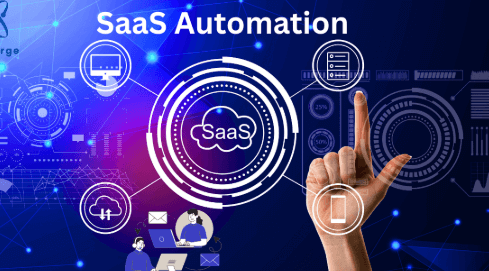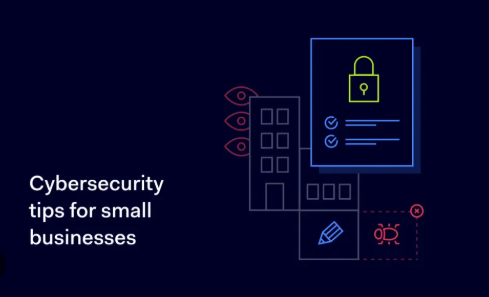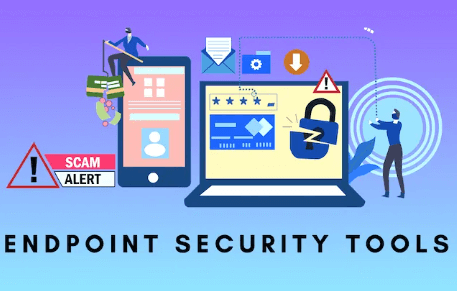Introduction
In today’s fast-moving digital economy, efficiency is king. For SaaS (Software as a Service) companies and businesses relying heavily on cloud tools, manual workflows and repetitive tasks quickly become bottlenecks. SaaS automation tools—platforms that streamline, integrate, and automate business processes—offer a powerful remedy. By leveraging automation, organizations can reduce errors, scale faster, and free human resources for higher-value work.
In this comprehensive guide, we’ll explore what SaaS automation tools are, the current trends shaping them, the top types you should know, how to choose and implement them effectively, and best practices to maximize their impact. We’ll also embed relevant keywords (e.g. SaaS automation, workflow automation, business process automation) and LSI terms (like integration platform, no-code automation, process orchestration) to ensure strong relevance and good visibility for users and search engines. Let’s dive in.
What Is SaaS Automation?
SaaS automation refers to using software tools—usually cloud-based—to automate repetitive tasks, integrate disparate applications, and orchestrate workflows across your stack. This can include everything from user onboarding, account provisioning, data syncing between apps, email campaigns, ticket routing, and more. In essence, SaaS automation turns manual, error-prone operations into smooth, scalable processes.
With the rise of hyperautomation (the concept of automating not just discrete tasks but entire business processes using AI, RPA, and orchestration) the boundary of automation is expanding rapidly.
Why SaaS Automation Tools Matter (The Benefits)
- Time Savings & Efficiency
Automating repetitive tasks—such as data entry, notifications, or approvals—frees up teams to focus on strategy and innovation. - Reduced Human Error
Manual processes are prone to inconsistencies and errors. Automation ensures consistency and auditability. - Scalability
As your SaaS business grows, workflows that once were manageable become overwhelming. Automation scales with demand. - Better Data Flow & Integration
Instead of siloed apps, automation tools unify data and orchestrate integrative workflows (e.g. between CRM, support, billing, analytics). - Improved Customer Experience
Faster responses, more personalized journeys, and fewer delays in service activate better user satisfaction. - Cost Control & ROI
While automation tools carry upfront cost, they often pay off through reduced manual labor, lower error remediation, and faster go-to-market.
Current Trends in SaaS Automation (2024–2025)
To write a future-forward guide, it’s vital to understand the key trends shaping the SaaS automation space right now.
- AI-Powered Automation & Predictive Workflows
More tools are embedding machine learning and AI to optimize workflows, anticipate next steps, and intelligently route tasks. - Hyperautomation & Orchestration Platforms
Organizations are moving beyond simple automation into full process orchestration, combining RPA, APIs, and AI to automate entire end-to-end operations. - Integration-First Tools & iPaaS Growth
Integration platforms as a service (iPaaS) will continue to thrive, enabling disparate applications to “talk” fluently. - Focus on Governance, Security & Shadow IT
As automation expands, so do security concerns and the risk of unmanaged tools. Managing SaaS sprawl and shadow IT is now a priority. - Vertical and Domain-Specific Automation
Instead of one-size-fits-all tools, many automation solutions are specializing by domain (e.g. marketing ops, sales, HR, finance) to deliver deeper value.
Types of SaaS Automation Tools & Use Cases
Here’s a taxonomy of common automation types and how SaaS businesses typically apply them:
| Type | Use Cases | Key Capabilities |
|---|---|---|
| Workflow Automation / No-Code Automation | Automating internal admin flows, approvals, notifications | Drag-and-drop builders, condition logic, triggers, connectors |
| Marketing Automation | Email drip campaigns, lead scoring, nurturing | Segmentation, multichannel workflows, campaign triggers |
| Sales & CRM Automation | Lead routing, quoting, follow-ups | Auto-assignment, pipeline triggers, integration with email/SMS |
| User Onboarding / Product Automation | In-app messages, user journeys, feature announcements | Behavioral triggers, in-app flows, onboarding checklists |
| Integration / iPaaS Tools | Syncing data between tools, custom pipelines | Connectors, mapping, error handling, transformations |
| RPA / Bot Automation | Performing backend repetitive tasks (esp. legacy systems) | Bot execution, schedule, screen scraping, orchestration |
| Support / Customer Success Automation | Ticket routing, auto-response, escalation | SLA rules, sentiment analysis, task automation |
For example, one SaaS business may use marketing automation to nurture trial users, workflow automation to manage approval processes, and an integration layer to sync data between CRM, support, and analytics.
Top SaaS Automation Tools Worth Exploring
While the ideal tool depends on your business, here’s a curated list of popular SaaS automation / orchestration tools frequently cited by practitioners and analysts:
- Zapier / Make — Popular no-code automation platforms connecting hundreds of SaaS apps.
- Workato — An integration & automation platform with enterprise-grade features.
- Microsoft Power Automate — For organizations entrenched in Microsoft ecosystem.
- Tray.io — Enables complex workflows and robust API orchestration.
- HubSpot (Operations / Automation tools within its suite)
- Customer.io / Autopilot / Intercom — For user journey and messaging automation.
- n8n — Open-source automation tool for custom workflows.
- Azuqua — A platform that integrates SaaS apps and builds cross-app automations.
Articles like “The 10 Best SaaS Automation Tools for Scaling Your Product” provide recent, curated comparisons and feature breakdowns.
How to Choose the Right SaaS Automation Tool
Selecting an automation tool is more than features and pricing—it’s about fit, scalability, and governance. Here’s a roadmap:
- Define Your Objectives & Key Workflows
Start by mapping your most time-consuming or error-prone processes. Identify what you want to automate first. - Check Integration Ecosystem
A tool is only useful if it connects to your current stack. Look for pre-built connectors and API support. - Ease of Use & Onboarding
A steep learning curve defeats the purpose. Tools with intuitive no-code builders reduce friction. - Scalability & Performance
Your tool should handle increasing volumes and complexity. - Monitoring, Error Handling & Logging
Transparency is critical: you need visibility into failed runs and the ability to debug. - Security & Access Controls
Role-based permissions, data encryption, compliance (e.g., SOC2) are essential as automation touches sensitive systems. - Cost & Licensing Model
Many tools price by usage (e.g. number of runs, connectors, users). Project your growth. - Governance & Auditability
Especially in larger orgs, you’ll need checks and controls to avoid rogue automations or shadow IT. - Vendor Roadmap & Community Support
A vibrant community and active roadmap suggest it will evolve with your needs.
Implementation Best Practices & Strategy
Adopting automation is not plug-and-play. Below are practical steps and recommendations:
- Document and Map Processes First
Don’t automate chaos. Outline current processes, decision points, and dependencies before translating them into automation. - Start Small / Pilot Projects
Begin with high-impact, low-risk flows (e.g. lead routing, onboarding tasks) to validate tools and prove ROI. - Versioning & Change Control
Maintain staging, test, and production environments. Apply version control for your workflows, especially for complex orchestrations. - Reevaluate and Iterate
Automation is not “set and forget.” Regularly review performance, failures, and opportunities for optimization. - Define Ownership & Governance
Establish roles—who owns the automations, monitoring, error resolution, and permissioning. - Implement Safeguards and Fallbacks
When a workflow fails, have fallback procedures or alerts to mitigate downstream issues. - Train & Document
Ensure your teams understand what’s automated, how to override, and how to monitor. - Monitor and Audit
Track KPIs (e.g. run success rate, processing time, error volume) and conduct periodic audits to prevent drift or misuse.
Common Pitfalls & How to Avoid Them
- Over-automation: Automating too many marginal tasks can yield little value and complex maintenance.
- Ignoring error cases: Failing to build error paths and alerts can make issues invisible.
- Siloed automations: If each team builds its own logic without coordination, you risk duplications, conflicts, or data inconsistencies.
- Lack of documentation: Without clearly documenting your flows, your automations become “black box” systems.
- Skipping reviews: Business processes evolve; automations that once worked may become obsolete or harmful.
Real-World Example & Use Case
Imagine a SaaS company offering project management software. They use:
- Marketing automation to drip personalized emails to trial users.
- Workflow automation to enrich user profiles when they complete certain actions.
- An integration layer that syncs leads from the website into their CRM and support system.
- A product automation layer to onboard users automatically, show feature tours, and nudge usage.
When done right, the result is a seamless user journey—from acquisition to activation and retention—without heavy manual work.
Conclusion
In an era where speed, scale, and data-driven operations define success, SaaS automation tools are indispensable. They transform manual chores into efficient, reliable, and scalable workflows. When selected thoughtfully—considering integration, security, governance, and scalability—and implemented with care, automation amplifies productivity and decision capacity.
But remember: automation is not a one-time fix. It demands ongoing iteration, monitoring, and alignment with business strategy. By blending automation with human oversight, you can unlock operational excellence and propel your SaaS business into new heights.
Let’s embark on this automation journey wisely, testing often, governing well, and always striving for simplicity over complexity.
FAQs (People Also Ask)
- What are SaaS automation tools used for?
SaaS automation tools are used to automate repetitive tasks, integrate multiple SaaS applications, orchestrate workflows, provision user access, route data, and improve consistency across business operations. - How do I choose the best SaaS automation platform?
Evaluate your existing tech stack, required integrations, ease of use, scalability, error handling, security needs, cost structure, and governance model to select a platform that fits your growth path. - Are no-code automation tools suitable for large enterprises?
Yes — many no-code automation tools now support enterprise-level features like version control, audit logs, role-based access, and complex logic, making them viable even in large settings. - How do SaaS automation tools relate to hyperautomation?
Hyperautomation is the next-level concept: automating entire end-to-end processes by combining AI, RPA, orchestration, and analytics. SaaS automation tools provide the building blocks for hyperautomation. - What are the risks of implementing automation?
Risks include creating brittle or opaque workflows, failing to handle exceptions, security vulnerabilities, uncontrolled shadow automation, and a lack of monitoring. Governance, testing, and continuous review help mitigate them.




